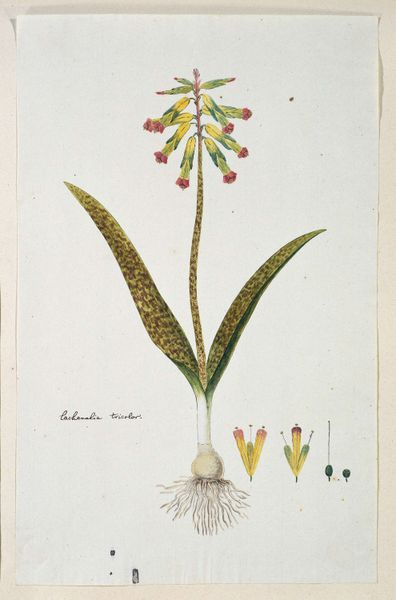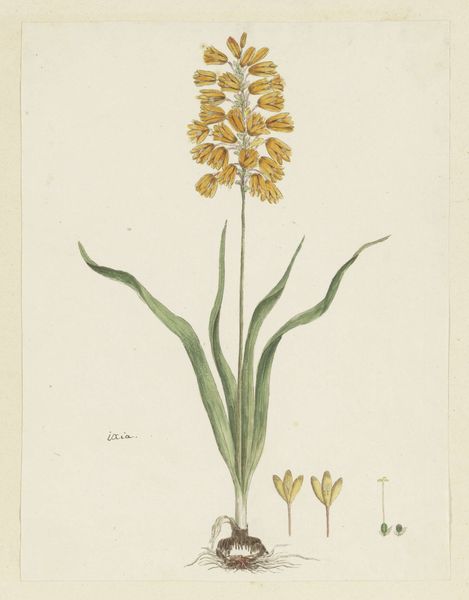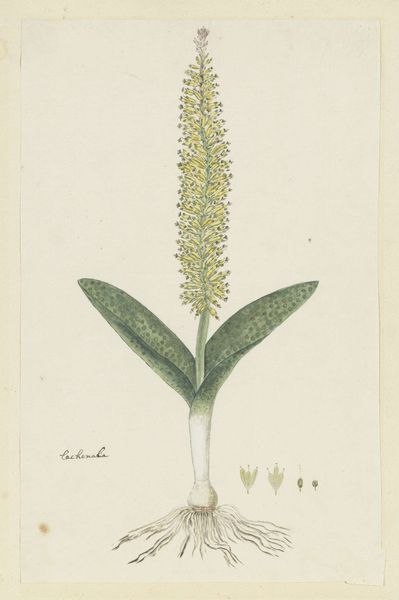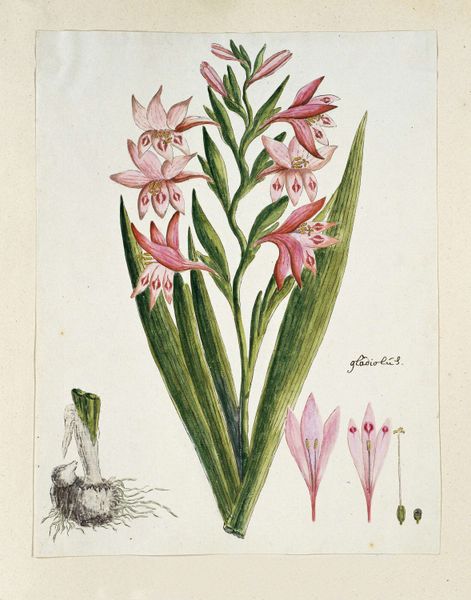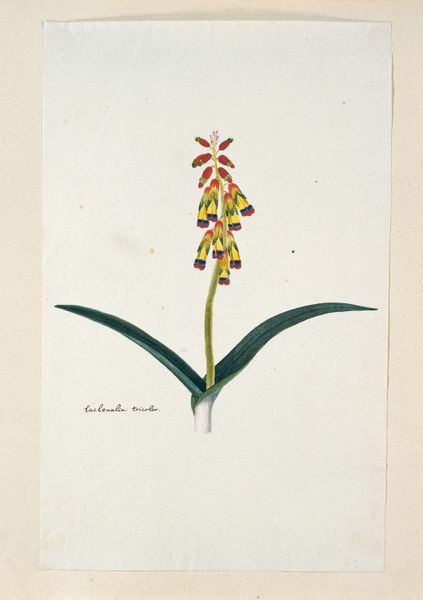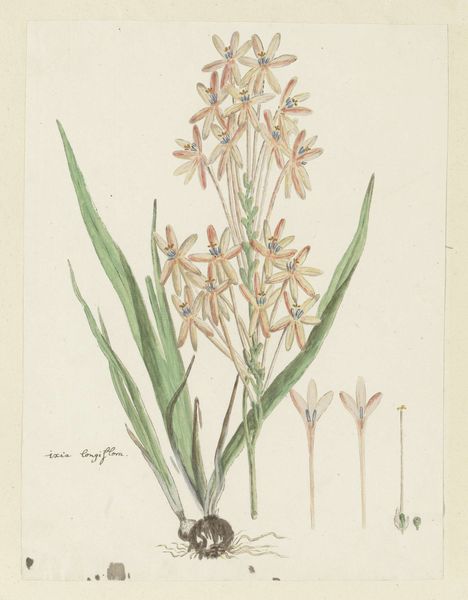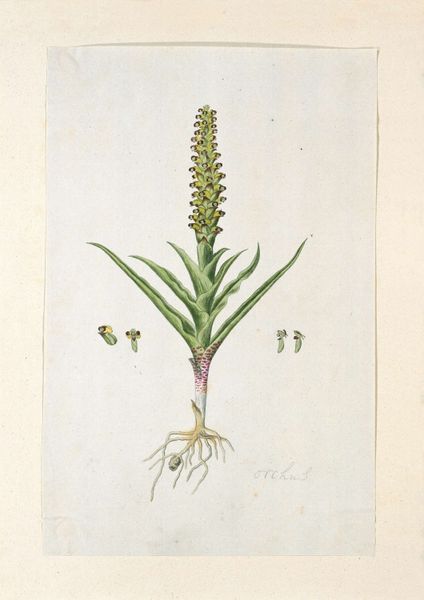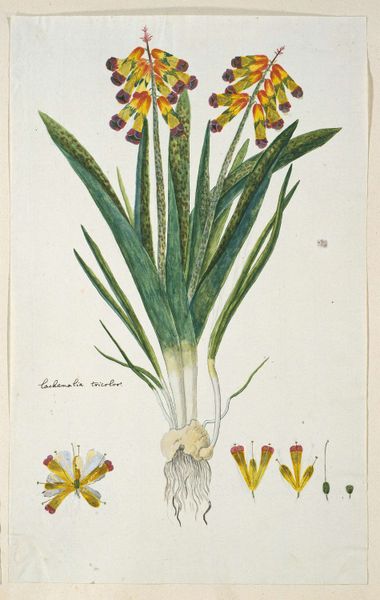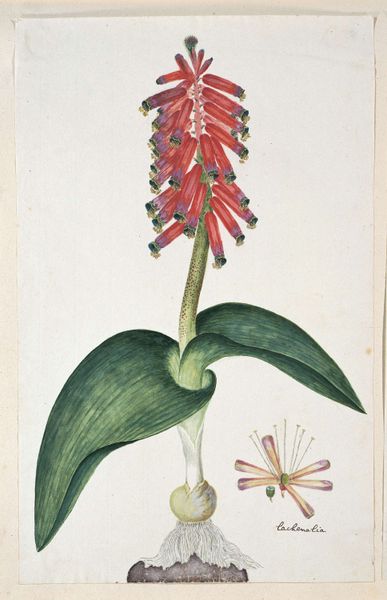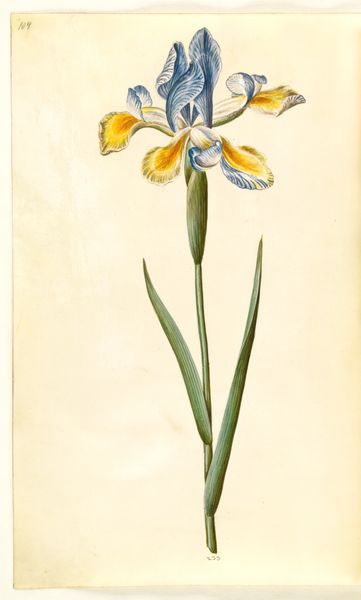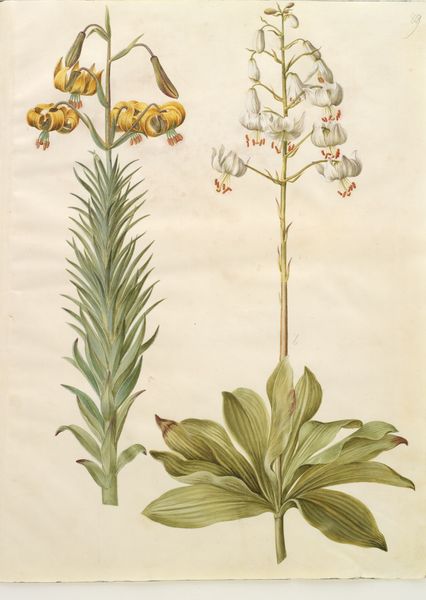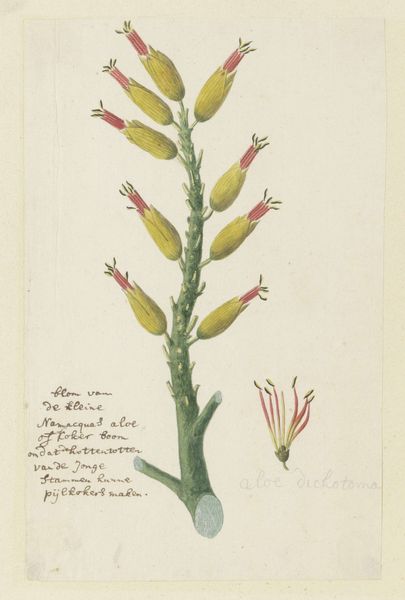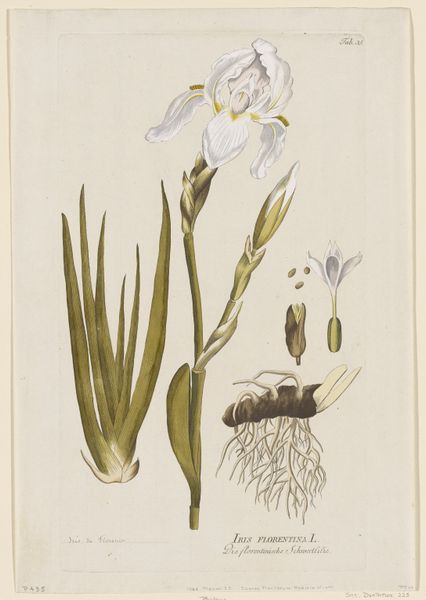
Lachenalia aloides (L.f.) Engl. var. aurea (Opal flower) Possibly 1777 - 1786
0:00
0:00
drawing, paper, watercolor
#
drawing
#
paper
#
watercolor
#
watercolour illustration
#
botanical art
#
watercolor
Dimensions: height 660 mm, width 480 mm, height 421 mm, width 260 mm, height mm, width mm
Copyright: Rijks Museum: Open Domain
Robert Jacob Gordon made this watercolor painting of a Lachenalia aloides in the late 18th century. As a commander of the Dutch East India Company garrison at the Cape of Good Hope, Gordon played a significant role in the European colonial project. This botanical illustration reflects the intersection of scientific exploration and colonial expansion that took place at this time. The detailed rendering of the plant, including its leaves, flowers, and root system, speaks to the growing interest in natural history during the Enlightenment. European powers often sponsored voyages of discovery to document and classify the flora and fauna of newly encountered lands. Such knowledge of natural resources, of course, could be converted into economic and political power. The Lachenalia aloides is presented as a specimen, stripped of its environmental context, and recontextualized as an object of scientific study. The meticulous artistry also reveals the complicated relationship between art, science, and colonialism. By consulting archives related to the Dutch East India Company, we can explore these historical dynamics.
Comments
No comments
Be the first to comment and join the conversation on the ultimate creative platform.
